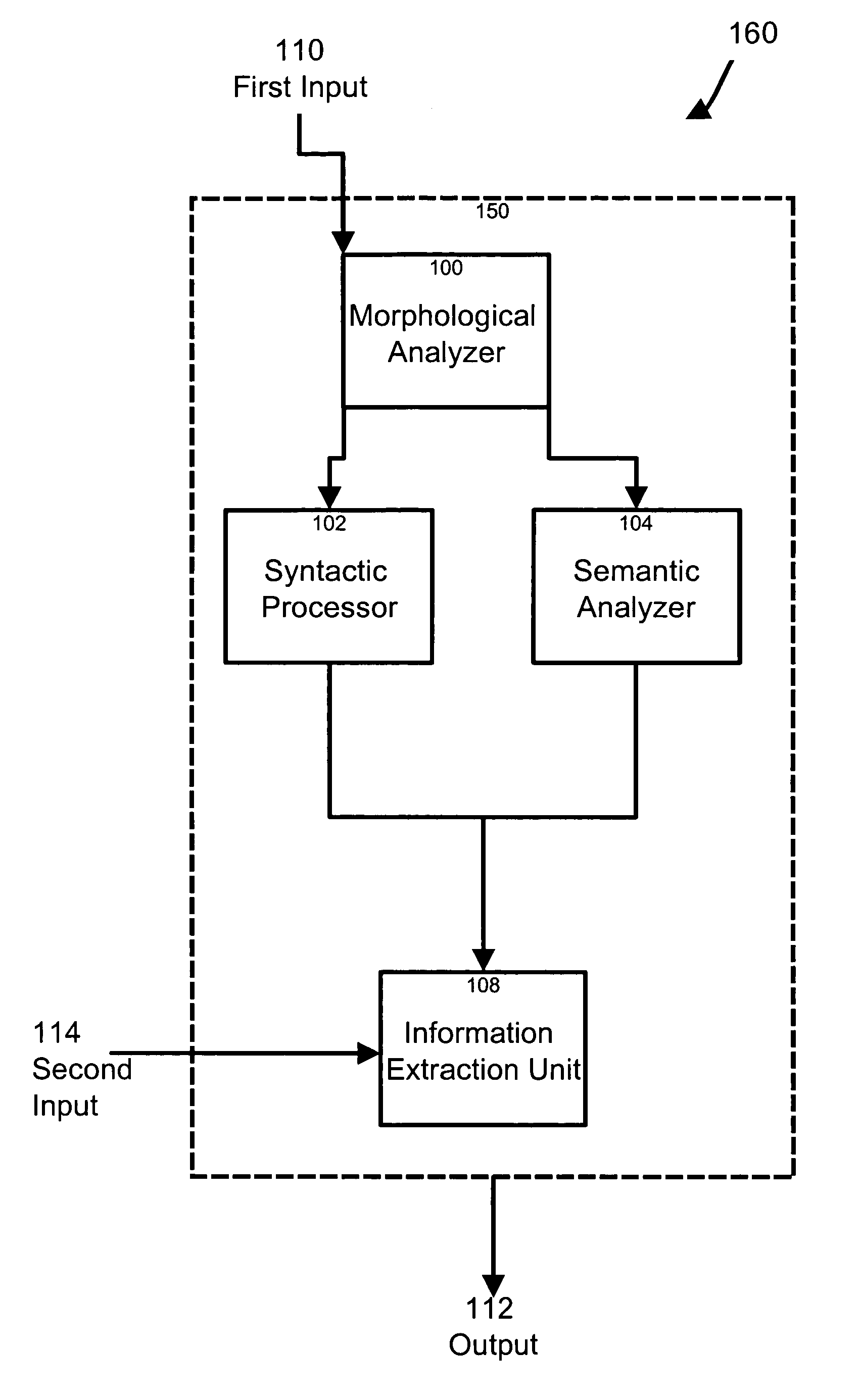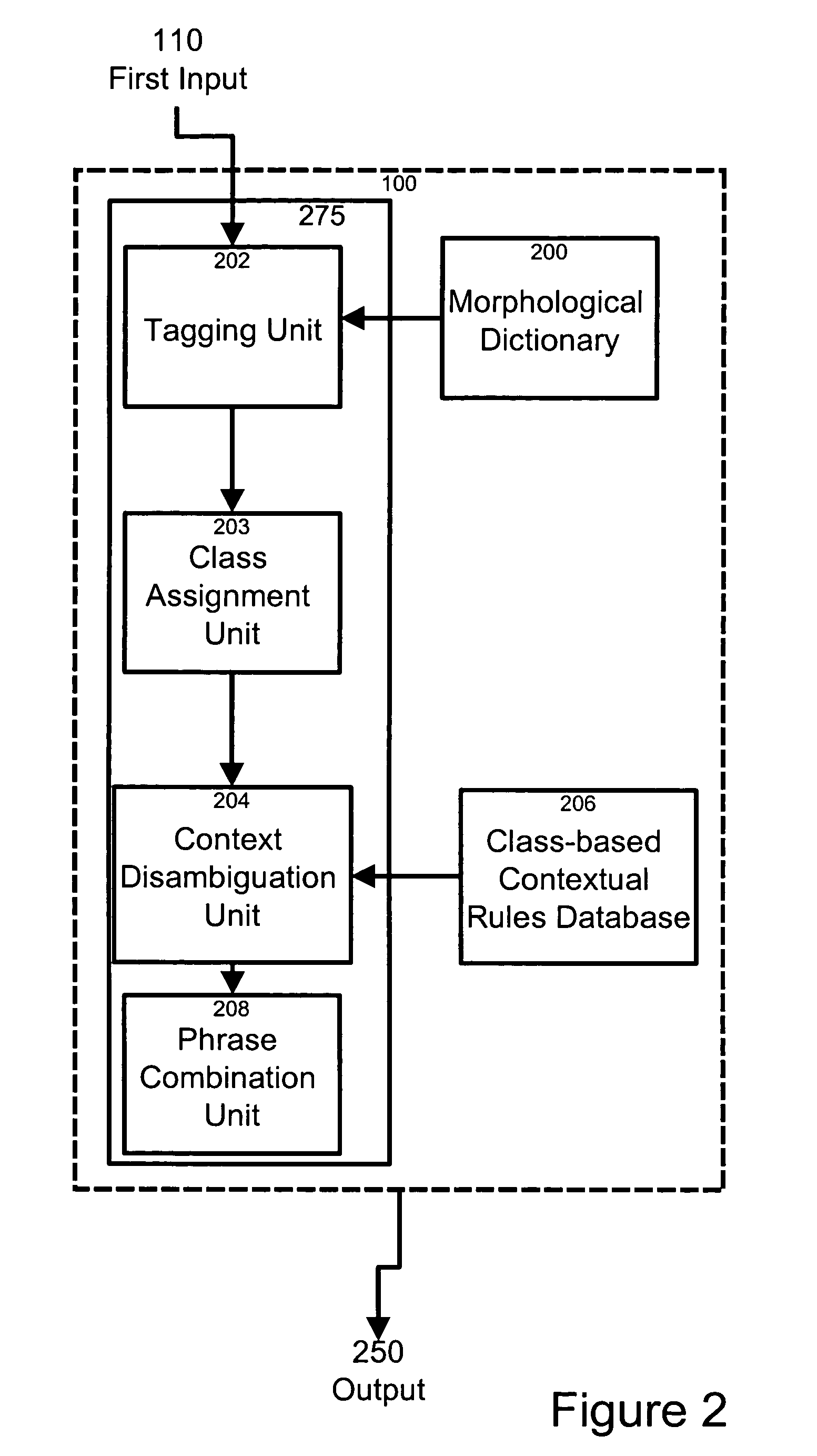Method and apparatus for deriving information from written text
a written text and information technology, applied in the field of natural language processing, can solve the problems of difficult to locate, extract and make sense of relevant information, many ambiguities to be left unresolved, and the information contained in narrative texts is not organized, so as to achieve better coverage and high precision
- Summary
- Abstract
- Description
- Claims
- Application Information
AI Technical Summary
Benefits of technology
Problems solved by technology
Method used
Image
Examples
Embodiment Construction
[0037]In accordance with a specific example of implementation, as depicted in FIG. 1 of the drawings, a natural language information extraction system 160 for deriving information from a textual representation of a sentence is provided having a first input 110, a processing unit 150 coupled to the first input and an output 112 coupled to the processing unit 150. In a non-limiting example, the natural language information extraction system 160 further comprises a second input 114 coupled to the processing unit 150 for receiving a set of information extraction rules.
[0038]The first input 110 is for receiving a signal including data elements indicative of a textual representation of a sentence. In a specific example of implementation, the sentence comprises a plurality of words arranged in a narrative format. The input 110 may be operatively coupled to an input device such as a keyboard, mouse, touch pad, IR link, data feed link or any other communication path allowing the input to rec...
PUM
 Login to View More
Login to View More Abstract
Description
Claims
Application Information
 Login to View More
Login to View More - R&D
- Intellectual Property
- Life Sciences
- Materials
- Tech Scout
- Unparalleled Data Quality
- Higher Quality Content
- 60% Fewer Hallucinations
Browse by: Latest US Patents, China's latest patents, Technical Efficacy Thesaurus, Application Domain, Technology Topic, Popular Technical Reports.
© 2025 PatSnap. All rights reserved.Legal|Privacy policy|Modern Slavery Act Transparency Statement|Sitemap|About US| Contact US: help@patsnap.com



